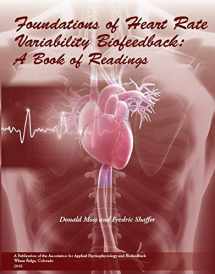
Foundations of Heart Rate Variability Biofeedback: A Book of Readings
Book details
Summary
Description
Research on heart rate variability (HRV) emerged in the 1960s and 1970s, as modern signal processing facilitated measurement and analysis. By the 1980s, it became clear that HRV was a critical indicator of health, resilience, and well-being. One landmark study in 1987 by Robert Kleiger and colleagues found that after a myocardial infarction, patients in the moderate range of heart rate variability had a five times lower risk of mortality than patients in the lowest range of heart rate variability (Kleiger et al., 1987). Lowered HRV was reported in diabetes, coronary disease, anxiety, depression, asthma, and sudden infant death (McCraty & Shaffer, 2015). Lower HRV was conceptualized as an indicator of autonomic dysregulation and the body's general regulatory capacity. Heart rate variability biofeedback arrived on the North American scene in the 1990s. Through biofeedback training, HRV can be increased, with significant impact on health, wellness, and human functioning. Since that time, a proliferation of outcome studies has shown a widening range of applications with promising therapeutic effects, from asthma to depression to hypertension to fibromyalgia to PTSD. Many of the leading authors in the field of heart rate variability biofeedback have published reports on their work in the Biofeedback magazine. This volume compiles many of those articles published between 2008 and 2015, and sums up what we now know about heart rate variability (HRV) and heart rate variability biofeedback (HRVB), which clinical protocols are supported by research, and what therapists actually do-how they train human beings for clinical benefit.


We would LOVE it if you could help us and other readers by reviewing the book
Book review




